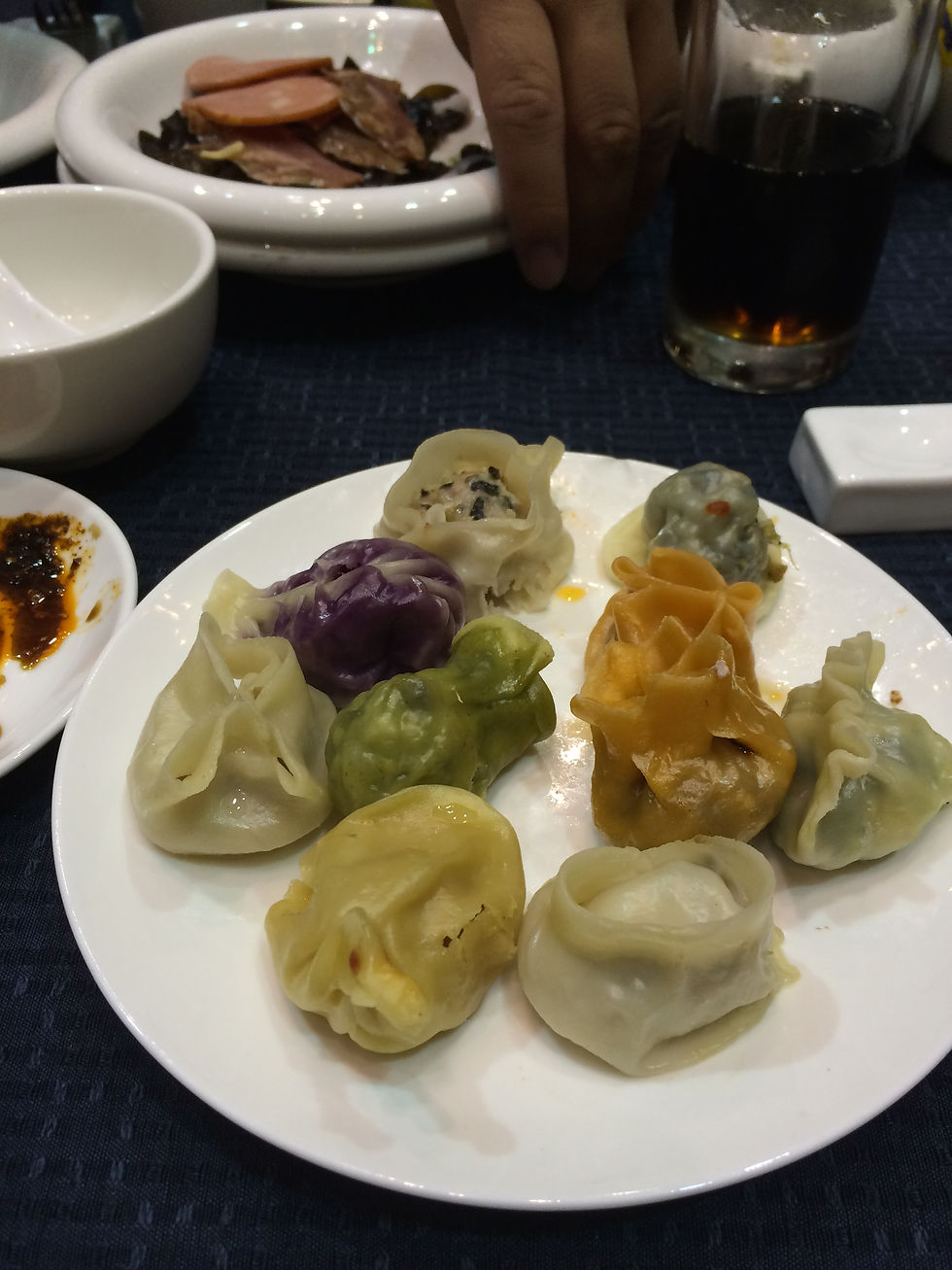Day 5: China Adventure – Xi’an & The Terracotta Army
- Mike McHugh
- May 14, 2015
- 3 min read
We woke up on our train at 7:30 AM and were ready to take on the ancient city of Xi’an which was the capital of China under the Tang Dynasty. We met our local guide, Ken, and headed to our hotel for breakfast.
On our way to the hotel, we learned that the Chinese President & Indian Prime Minister were in town to negotiate a trade deal. This led to a lot of street closures and forced our tour guides to make a few last minute changes, but they did them so well that the day’s itinerary felt natural.
After a quick breakfast, we left for the Tang Bo Art Museum which displayed art that was primarily done by amateurs. We received a quick tour of the museum and received an abbreviated history of the art in it.

This is the old traditional Chinese house. The bedroom is located a level above the kitchen, but in an adjacent room. This allows the heat from the oven to warm the bedroom.

Chinese Propaganda

Shadow Puppets (Made out of Donkey Skin)

Traditional Chinese Artwork

Traditional Chinese Artwork
We concluded our tour with a calligraphy lesson. The brushes we used were made out of rat whiskers and the paper was rice paper. I very quickly learned that I am still horrible at art!

Our Instructor’s Calligraphy

My Calligraphy
After our tour, we left to see our second Eight Wonder of the World in 3 days – the Terracotta Army! They were discovered by a group of farmers in 1979 when they were digging for a well. Only one farmer is still alive and he works in the gift shop.
The Terracotta Army was commissioned by Emperor Qin Shi Huang of the Tang Dynasty who believed he was going to lead a war in the afterlife and needed an army to protect him and fight his battles. The Emperor wanted to be the only person who had that specific army, so all the sculptors were killed after they completed their work. Knowing this, they carved their faces into the warriors so they could also live on in an afterlife. We also learned that the Emperor was obsessed with immortality and was led to believe that mercury was the elixir of life. Given that he drank it every day, he may not have been sane when he commissioned the army!
The actual archaeological site has three pits. Two pits are fully excavated, but the third pit is dug out to just above the warriors. When the first pit was dug out, the color that the warriors were painted disappeared when the modern air contacted the surface of the statues, so they are waiting for technology to advance to the point where they can retain the original colors.

Pit 1 is the largest pit and was found to the east of the Emperor’s burial site. This is because the army was supposed to protect him from an attack from the east.

Terracotta Army

Pit 1 was massive

The restoration of the warriors is done on site
After a quick lunch, we went to pit 3 which many believe was meant to be the “strategy room” due to the positioning of the soldiers. They are have their backs along the wall as if someone important was walking between them.

Strategy Room

Strategy Room
Our final stop was the partially excavated pit.

Partially Excavated Pit
The pit also had four warriors in glass cases for the public to look at. The detail was phenomenal – you could even see the sole on one of their shoes! Also, one statue was sprayed with a chemical to preserve the natural coloring for 40 years.

The warriors are huge up close

The detail on the sole of the shoe is amazing

Terracotta Warrior & His Horse

Terracotta Warrior
After our visit, we headed back to our hotel for an hour. We could not go outside as the road was closed to pedestrian traffic due to the political visitors, so we relaxed and got ready for the evening’s activity – a 16 Course Dumpling Dinner & Tang Dynasty Cultural Dance Show.
First, let me start with the dumplings. They were the best dumplings I’ve had in my life and I ate all 16 types. By the end of dinner, we lost track of what was what. I know I ate everything from bean to pork to seaweed to shrimp to duck! The duck dumpling was even shaped like a duck!

Dumplings

Dumplings

Duck Shaped Dumpling
The actual show was comprised of 11 different dances or musical performances. They showcased traditional costumes, dances and songs from the Tang Dynasty.





After the show, we headed out to a local area with traditional Chinese bars. They all had a person singing and playing the keyboard. It was quite relaxing and great to get to know my fellow travelers better.

The Bar Street

The Musicians
After the bar, a few of us decided to walk down to check out a few of the city towers because they look so beautiful at night.


After our night stroll, we headed back to the hotel.
.png)
Comments